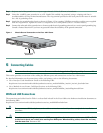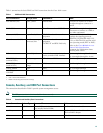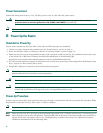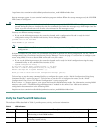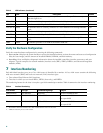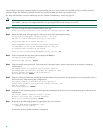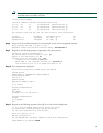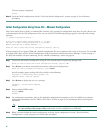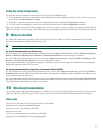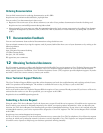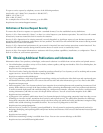
20
The user prompt is displayed.
Router>
Step 12 Verify the initial configuration. See the “Verify the Initial Configuration” section on page 21 for verification
procedures.
Initial Configuration Using Cisco CLI—Manual Configuration
This section shows how to display a command-line interface (CLI) prompt for configuration using the CLI, and it directs you
to documentation for the CLI configuration. You can use the CLI if the following messages appear at the end of the startup
sequence:
--- System Configuration Dialog ---
At any point you may enter a question mark '?' for help.
Use ctrl-c to abort configuration dialog at any prompt.
Default settings are in square brackets '[]'.
Would you like to enter the initial configuration dialog? [yes/no]:
If these messages do not appear, SDM and a default configuration file were installed on the router at the factory. To use SDM
to configure the router, see the “Initial Configuration Using Cisco Router and Security Device Manager” section on page 17.
For help with interface and port numbering, see the “Interface Numbering” section on page 16.
Step 1 To proceed with manual configuration using the CLI, enter no when the power-up messages end:
Would you like to enter the initial configuration dialog? [yes/no]: no
Step 2 Press Return to terminate autoinstall and continue with manual configuration:
Would you like to terminate autoinstall? [yes] Return
Several messages appear, ending with a line similar to the following:
Copyright (c) 1986-2004 by Cisco Systems, Inc.
Compiled <date> <time> by <person>
Step 3 Press Return to display the Router> prompt:
...
flashfs[4]: Initialization complete.
Router>
Step 4 Enter privileged EXEC mode:
Router> enable
Router#
Step 5 For configuration procedures, refer to the applicable configuration instructions in the Cisco 2800 series software
configuration documents. See the “Where to Go Next” section on page 21 for information about accessing these
documents.
Note To avoid losing work you have completed, be sure to save your configuration occasionally as you proceed. Use
the copy running-config startup-config command to save the configuration to NVRAM.
Step 6 When you have finished the initial configuration, verify the initial configuration. See the “Verify the Initial
Configuration” section on page 21 for verification procedures.





